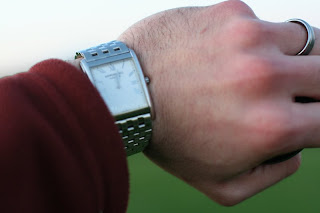The family farm isn't constantly inhabited anymore, but it's still visited quite often. Right next to the house are the remains of the sod houses which were inhabited a century ago.
The farm has a great view of Hekla and of a couple of glaciers.
Hekla is a very photogenic mountain, rising alone from the ground. It also happens to be Iceland's most active volcano, having last erupted in 2000. During the middle ages, it was considered in Europe to be one of the entrances to hell. Now that's notoriety!
That weekend also included Jónsmessa, which correlates with the longest day the year (near the summer solstice). So it's traditional to have a big bonfire, which was quite fun :). We were about a dozen people, and we went through a large pile of wood. Which, I found out later, was the remains of a horse stable there that was destroyed in the 2000 independence day earthquake.
We camped for the night in our new tent, and drove around the area the next day. We stopped at the local cemetery. I don't know, why but there is something strangely low-key and comforting about Icelandic cemeteries. Maybe it's the not-too-fancy plaques and the disorderly grass. I wonder how they will look in the winter though.
 Hekla
Hekla The farm
The farm The sod houses (the grill is a later addition)
The sod houses (the grill is a later addition) Wife and volcano
Wife and volcano Running towards the glacier
Running towards the glacier A little stream
A little stream Warm...
Warm... My face 2 seconds after having a swig of whiskey from a bottle that was passed to me
My face 2 seconds after having a swig of whiskey from a bottle that was passed to me Midnight light
Midnight light The road to hell?
The road to hell? Birds...
Birds... ... And sheep
... And sheep Kindur undir jökli (aka Sheep under glacier)
Kindur undir jökli (aka Sheep under glacier) A cemetery with a view
A cemetery with a view
No comments:
Post a Comment